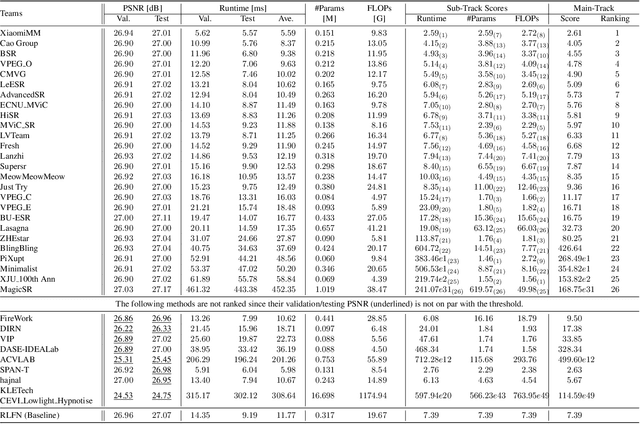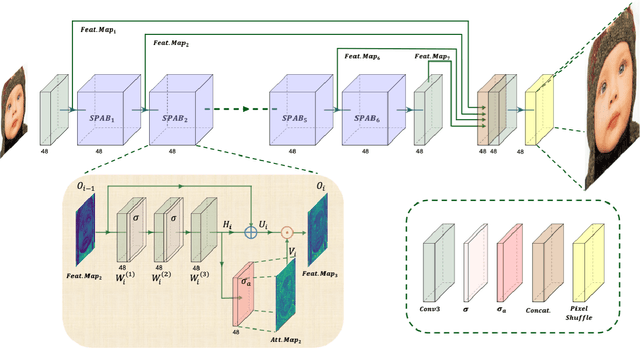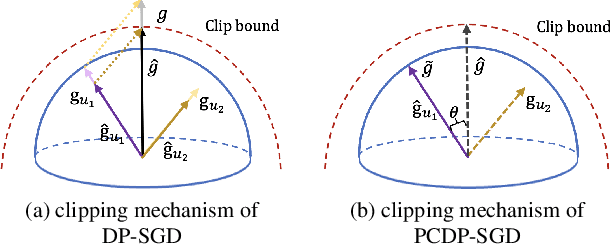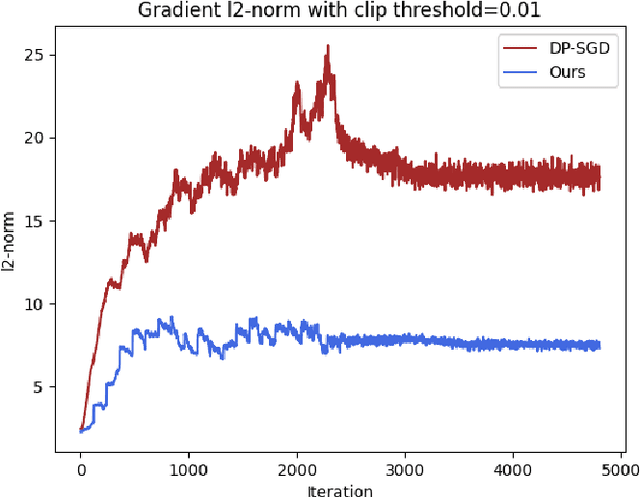Yixuan Liu
Renmin University of China
Scale-Free Graph-Language Models
Feb 21, 2025Abstract:Graph-language models (GLMs) have demonstrated great potential in graph-based semi-supervised learning. A typical GLM consists of two key stages: graph generation and text embedding, which are usually implemented by inferring a latent graph and finetuning a language model (LM), respectively. However, the former often relies on artificial assumptions about the underlying edge distribution, while the latter requires extensive data annotations. To tackle these challenges, this paper introduces a novel GLM that integrates graph generation and text embedding within a unified framework. Specifically, for graph generation, we leverage an inherent characteristic of real edge distribution--the scale-free property--as a structural prior. We unexpectedly find that this natural property can be effectively approximated by a simple k-nearest neighbor (KNN) graph. For text embedding, we develop a graph-based pseudo-labeler that utilizes scale-free graphs to provide complementary supervision for improved LM finetuning. Extensive experiments on representative datasets validate our findings on the scale-free structural approximation of KNN graphs and demonstrate the effectiveness of integrating graph generation and text embedding with a real structural prior. Our code is available at https://github.com/Jianglin954/SFGL.
Edit as You See: Image-guided Video Editing via Masked Motion Modeling
Jan 08, 2025Abstract:Recent advancements in diffusion models have significantly facilitated text-guided video editing. However, there is a relative scarcity of research on image-guided video editing, a method that empowers users to edit videos by merely indicating a target object in the initial frame and providing an RGB image as reference, without relying on the text prompts. In this paper, we propose a novel Image-guided Video Editing Diffusion model, termed IVEDiff for the image-guided video editing. IVEDiff is built on top of image editing models, and is equipped with learnable motion modules to maintain the temporal consistency of edited video. Inspired by self-supervised learning concepts, we introduce a masked motion modeling fine-tuning strategy that empowers the motion module's capabilities for capturing inter-frame motion dynamics, while preserving the capabilities for intra-frame semantic correlations modeling of the base image editing model. Moreover, an optical-flow-guided motion reference network is proposed to ensure the accurate propagation of information between edited video frames, alleviating the misleading effects of invalid information. We also construct a benchmark to facilitate further research. The comprehensive experiments demonstrate that our method is able to generate temporally smooth edited videos while robustly dealing with various editing objects with high quality.
ReNeg: Learning Negative Embedding with Reward Guidance
Dec 27, 2024Abstract:In text-to-image (T2I) generation applications, negative embeddings have proven to be a simple yet effective approach for enhancing generation quality. Typically, these negative embeddings are derived from user-defined negative prompts, which, while being functional, are not necessarily optimal. In this paper, we introduce ReNeg, an end-to-end method designed to learn improved Negative embeddings guided by a Reward model. We employ a reward feedback learning framework and integrate classifier-free guidance (CFG) into the training process, which was previously utilized only during inference, thus enabling the effective learning of negative embeddings. We also propose two strategies for learning both global and per-sample negative embeddings. Extensive experiments show that the learned negative embedding significantly outperforms null-text and handcrafted counterparts, achieving substantial improvements in human preference alignment. Additionally, the negative embedding learned within the same text embedding space exhibits strong generalization capabilities. For example, using the same CLIP text encoder, the negative embedding learned on SD1.5 can be seamlessly transferred to text-to-image or even text-to-video models such as ControlNet, ZeroScope, and VideoCrafter2, resulting in consistent performance improvements across the board.
DARWIN 1.5: Large Language Models as Materials Science Adapted Learners
Dec 16, 2024Abstract:Materials discovery and design aim to find components and structures with desirable properties over highly complex and diverse search spaces. Traditional solutions, such as high-throughput simulations and machine learning (ML), often rely on complex descriptors, which hinder generalizability and transferability across tasks. Moreover, these descriptors may deviate from experimental data due to inevitable defects and purity issues in the real world, which may reduce their effectiveness in practical applications. To address these challenges, we propose Darwin 1.5, an open-source large language model (LLM) tailored for materials science. By leveraging natural language as input, Darwin eliminates the need for task-specific descriptors and enables a flexible, unified approach to material property prediction and discovery. We employ a two-stage training strategy combining question-answering (QA) fine-tuning with multi-task learning (MTL) to inject domain-specific knowledge in various modalities and facilitate cross-task knowledge transfer. Through our strategic approach, we achieved a significant enhancement in the prediction accuracy of LLMs, with a maximum improvement of 60\% compared to LLaMA-7B base models. It further outperforms traditional machine learning models on various tasks in material science, showcasing the potential of LLMs to provide a more versatile and scalable foundation model for materials discovery and design.
Taming Diffusion Prior for Image Super-Resolution with Domain Shift SDEs
Sep 26, 2024



Abstract:Diffusion-based image super-resolution (SR) models have attracted substantial interest due to their powerful image restoration capabilities. However, prevailing diffusion models often struggle to strike an optimal balance between efficiency and performance. Typically, they either neglect to exploit the potential of existing extensive pretrained models, limiting their generative capacity, or they necessitate a dozens of forward passes starting from random noises, compromising inference efficiency. In this paper, we present DoSSR, a Domain Shift diffusion-based SR model that capitalizes on the generative powers of pretrained diffusion models while significantly enhancing efficiency by initiating the diffusion process with low-resolution (LR) images. At the core of our approach is a domain shift equation that integrates seamlessly with existing diffusion models. This integration not only improves the use of diffusion prior but also boosts inference efficiency. Moreover, we advance our method by transitioning the discrete shift process to a continuous formulation, termed as DoS-SDEs. This advancement leads to the fast and customized solvers that further enhance sampling efficiency. Empirical results demonstrate that our proposed method achieves state-of-the-art performance on synthetic and real-world datasets, while notably requiring only 5 sampling steps. Compared to previous diffusion prior based methods, our approach achieves a remarkable speedup of 5-7 times, demonstrating its superior efficiency. Code: https://github.com/QinpengCui/DoSSR.
Unleash the Power of Ellipsis: Accuracy-enhanced Sparse Vector Technique with Exponential Noise
Jul 29, 2024Abstract:The Sparse Vector Technique (SVT) is one of the most fundamental tools in differential privacy (DP). It works as a backbone for adaptive data analysis by answering a sequence of queries on a given dataset, and gleaning useful information in a privacy-preserving manner. Unlike the typical private query releases that directly publicize the noisy query results, SVT is less informative -- it keeps the noisy query results to itself and only reveals a binary bit for each query, indicating whether the query result surpasses a predefined threshold. To provide a rigorous DP guarantee for SVT, prior works in the literature adopt a conservative privacy analysis by assuming the direct disclosure of noisy query results as in typical private query releases. This approach, however, hinders SVT from achieving higher query accuracy due to an overestimation of the privacy risks, which further leads to an excessive noise injection using the Laplacian or Gaussian noise for perturbation. Motivated by this, we provide a new privacy analysis for SVT by considering its less informative nature. Our analysis results not only broaden the range of applicable noise types for perturbation in SVT, but also identify the exponential noise as optimal among all evaluated noises (which, however, is usually deemed non-applicable in prior works). The main challenge in applying exponential noise to SVT is mitigating the sub-optimal performance due to the bias introduced by noise distributions. To address this, we develop a utility-oriented optimal threshold correction method and an appending strategy, which enhances the performance of SVT by increasing the precision and recall, respectively. The effectiveness of our proposed methods is substantiated both theoretically and empirically, demonstrating significant improvements up to $50\%$ across evaluated metrics.
DPDR: Gradient Decomposition and Reconstruction for Differentially Private Deep Learning
Jun 04, 2024Abstract:Differentially Private Stochastic Gradients Descent (DP-SGD) is a prominent paradigm for preserving privacy in deep learning. It ensures privacy by perturbing gradients with random noise calibrated to their entire norm at each training step. However, this perturbation suffers from a sub-optimal performance: it repeatedly wastes privacy budget on the general converging direction shared among gradients from different batches, which we refer as common knowledge, yet yields little information gain. Motivated by this, we propose a differentially private training framework with early gradient decomposition and reconstruction (DPDR), which enables more efficient use of the privacy budget. In essence, it boosts model utility by focusing on incremental information protection and recycling the privatized common knowledge learned from previous gradients at early training steps. Concretely, DPDR incorporates three steps. First, it disentangles common knowledge and incremental information in current gradients by decomposing them based on previous noisy gradients. Second, most privacy budget is spent on protecting incremental information for higher information gain. Third, the model is updated with the gradient reconstructed from recycled common knowledge and noisy incremental information. Theoretical analysis and extensive experiments show that DPDR outperforms state-of-the-art baselines on both convergence rate and accuracy.
SciQAG: A Framework for Auto-Generated Scientific Question Answering Dataset with Fine-grained Evaluation
May 16, 2024Abstract:The use of question-answer (QA) pairs for training and evaluating large language models (LLMs) has attracted considerable attention. Yet few available QA datasets are based on knowledge from the scientific literature. Here we bridge this gap by presenting Automatic Generation of Scientific Question Answers (SciQAG), a framework for automatic generation and evaluation of scientific QA pairs sourced from published scientific literature. We fine-tune an open-source LLM to generate \num{960000} scientific QA pairs from full-text scientific papers and propose a five-dimensional metric to evaluate the quality of the generated QA pairs. We show via LLM-based evaluation that the generated QA pairs consistently achieve an average score of 2.5 out of 3 across five dimensions, indicating that our framework can distill key knowledge from papers into high-quality QA pairs at scale. We make the dataset, models, and evaluation codes publicly available.
The Ninth NTIRE 2024 Efficient Super-Resolution Challenge Report
Apr 16, 2024



Abstract:This paper provides a comprehensive review of the NTIRE 2024 challenge, focusing on efficient single-image super-resolution (ESR) solutions and their outcomes. The task of this challenge is to super-resolve an input image with a magnification factor of x4 based on pairs of low and corresponding high-resolution images. The primary objective is to develop networks that optimize various aspects such as runtime, parameters, and FLOPs, while still maintaining a peak signal-to-noise ratio (PSNR) of approximately 26.90 dB on the DIV2K_LSDIR_valid dataset and 26.99 dB on the DIV2K_LSDIR_test dataset. In addition, this challenge has 4 tracks including the main track (overall performance), sub-track 1 (runtime), sub-track 2 (FLOPs), and sub-track 3 (parameters). In the main track, all three metrics (ie runtime, FLOPs, and parameter count) were considered. The ranking of the main track is calculated based on a weighted sum-up of the scores of all other sub-tracks. In sub-track 1, the practical runtime performance of the submissions was evaluated, and the corresponding score was used to determine the ranking. In sub-track 2, the number of FLOPs was considered. The score calculated based on the corresponding FLOPs was used to determine the ranking. In sub-track 3, the number of parameters was considered. The score calculated based on the corresponding parameters was used to determine the ranking. RLFN is set as the baseline for efficiency measurement. The challenge had 262 registered participants, and 34 teams made valid submissions. They gauge the state-of-the-art in efficient single-image super-resolution. To facilitate the reproducibility of the challenge and enable other researchers to build upon these findings, the code and the pre-trained model of validated solutions are made publicly available at https://github.com/Amazingren/NTIRE2024_ESR/.
PCDP-SGD: Improving the Convergence of Differentially Private SGD via Projection in Advance
Dec 06, 2023



Abstract:The paradigm of Differentially Private SGD~(DP-SGD) can provide a theoretical guarantee for training data in both centralized and federated settings. However, the utility degradation caused by DP-SGD limits its wide application in high-stakes tasks, such as medical image diagnosis. In addition to the necessary perturbation, the convergence issue is attributed to the information loss on the gradient clipping. In this work, we propose a general framework PCDP-SGD, which aims to compress redundant gradient norms and preserve more crucial top gradient components via projection operation before gradient clipping. Additionally, we extend PCDP-SGD as a fundamental component in differential privacy federated learning~(DPFL) for mitigating the data heterogeneous challenge and achieving efficient communication. We prove that pre-projection enhances the convergence of DP-SGD by reducing the dependence of clipping error and bias to a fraction of the top gradient eigenspace, and in theory, limits cross-client variance to improve the convergence under heterogeneous federation. Experimental results demonstrate that PCDP-SGD achieves higher accuracy compared with state-of-the-art DP-SGD variants in computer vision tasks. Moreover, PCDP-SGD outperforms current federated learning frameworks when DP is guaranteed on local training sets.
 Add to Chrome
Add to Chrome Add to Firefox
Add to Firefox Add to Edge
Add to Edge